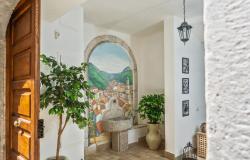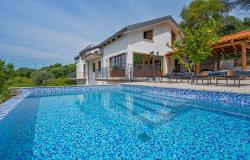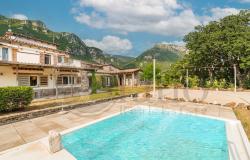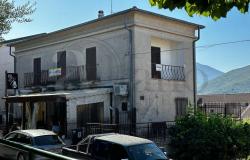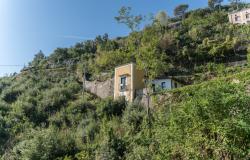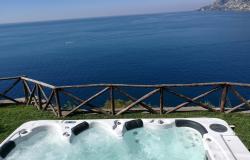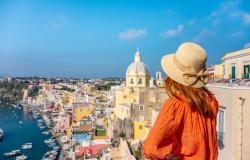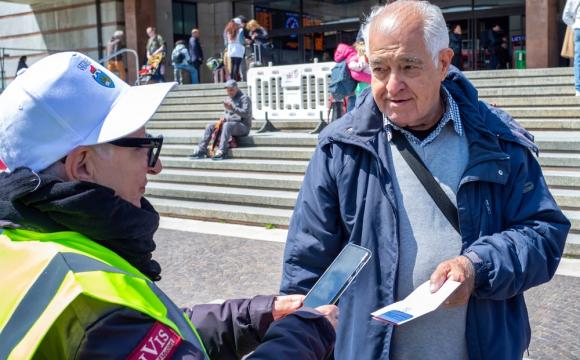Pictures by John Ferro Sims and Enzo Rando
Even from the plane you can see the light intensifying as you fly south towards Naples. A gleaming hydrofoil jets you across the bay to the volcanic island of Ischia and you come presently to La Mortella, one of the most sumptuous gardens in Europe, tended by an exotic septuagenarian lady with film star looks.
La Mortella (The Myrtle) is the place in the sun created by Sir William Walton, born a little more than 100 years ago, and his wife Lady Susana. With her at his side he was able to fulfil his dream, to live and work in Italy.
The musical lad from Oldham, Lancashire, wrote some of the most important choral, orchestral and film music of the 20th century, and he was helped by an unerring instinct for success.
As a nine-year-old he went to Christ Church Cathedral Choir School, Oxford, and while still an Oxford undergraduate he became part of the aristocratic Sitwells’ circle. Before long he was an ‘enfant terrible’ of music, supported by wealthy admirers.
The Barracks on the Hill
 The choice of Ischia was accidental. The winter after they married, the Waltons, tired of England, rented a charming but primitive house on the island at the suggestion of a travel agent.
The choice of Ischia was accidental. The winter after they married, the Waltons, tired of England, rented a charming but primitive house on the island at the suggestion of a travel agent.
Eventually they bought the hill of Zaro, then just a stone quarry, as their friend the actor Laurence Olivier described it. But the Waltons were smitten with the volcanic landscape and bought the first piece of land in June 1956.
The garden came first. Russell Page sketched out a rough L-shape, prompted by the contours of the land. ‘Never plant one, plant a hundred,’ were his words of advice. ‘Plant very young trees otherwise the winter gales will blow them down, and keep the great rocks free of vegetation so as not to lose their dramatic impact.’
At first there was no electricity, and water had to be delivered by truck. In 1962 the house was finally built, though William’s decision to place it halfway up the hill caused problems. After three architects tried and failed to get to grips with the project, William asked Susana and her mother to design the house themselves. Not trusting local contractors, Susana even designed the plumbing.
Today the house seems a part of the landscape but Susana admits that when it was newly built it looked severe. The local villagers called it ‘la caserma’ (the barracks).
Water Garden
 Twelve years later, the island began to receive water by pipeline from Naples. Russell Page redesigned the garden around the new water supply, balancing the plants against the grey stone house on the hill.
Twelve years later, the island began to receive water by pipeline from Naples. Russell Page redesigned the garden around the new water supply, balancing the plants against the grey stone house on the hill.
He chose mostly evergreen perennials, herbs and trees, believing that the many shades of green would provide ample variety. He also incorporated three fountains, one to replace the one William had built in front of the house, which Russell dismissed as ‘pipi de chat’.
Recreating the fountain on one level instead of two, Russell created the focal point of the whole property. He reorganised the terraces, planting his favourite cylindrical Kleinia repens and thick wads of palms, cycads, yuccas, aloes and agaves.
Now the Colombian giant herb gunnera manicata thrives on its own island in the pond, its leaves permanently damp under the jet of water. Nearby sprout Susana’s tree ferns, her pride and joy, enjoying the damp microclimate.
Among the 600 rare and exotic species in the garden today are the world’s largest waterlily, Victoria amazonica, and a rare desert bromeliad, sent in 1965 from a Cornish nursery.
Just as Ischia was a magnet for WH Auden, Christopher Isherwood and Truman Capote, so La Mortella became popular with the Waltons’ many friends: Laurence Olivier and Vivien Leigh visited, so did Terence Rattigan, Maria Callas and Charlie Chaplin.
‘My life is very odd,’ Susana says. ‘Other people have a private life. After William died, for two years I cried on everybody’s shoulder and was a frightful bore. But then I saw the point.’ The point, for her, was to develop the garden, to help young musicians, and to keep the Walton name alive.
Living Memorial
 According to William’s wishes Susana built up the William Walton Trust, and shortly after the composer’s death, constructed a 250-seat recital hall next to the house. Now every year La Mortella holds a masterclass week for musicians and opera singers, as well as regular concerts.
According to William’s wishes Susana built up the William Walton Trust, and shortly after the composer’s death, constructed a 250-seat recital hall next to the house. Now every year La Mortella holds a masterclass week for musicians and opera singers, as well as regular concerts.
Since 1991 the property has been open to the public and receives thousands of visits.
Today, this impressive lady runs the house and garden with an iron will, shaking bells to summon her staff, personally looking after the crowds of international visitors who come to the garden and its concerts. ‘Shall we meet in the teahouse and have a whatever, darlings?’ she beams to a group of guests. ‘Whatever’ turns out to be a potent home-made liqueur flavoured with myrtle leaves, sold as Mortella.
She gives many guided tours herself, and can tell the story of every plant and flower. For those wishing to stay longer, there is La Foresteria, a luxurious annexe that Susana built next to her own house. It has a private swimming pool and can accommodate 20 guests.
She jokes that she once overheard a tourist murmur, ‘Ma chi è Susana?’ Maybe the answer is found in a quiet corner of the upper garden overlooking the sea, where there is the inscription: ‘This green arbour is dedicated to Susana, who loved tenderly, worked, with passion, and believed in immortality.’
Visit the garden today and you see the full flowering of the Waltons’ vision, 40 years in the making. Or you can enjoy it from your armchair with Susana’s lavish book, ‘La Mortella - an Italian Garden Paradise’. For more information, please visit the store below.

